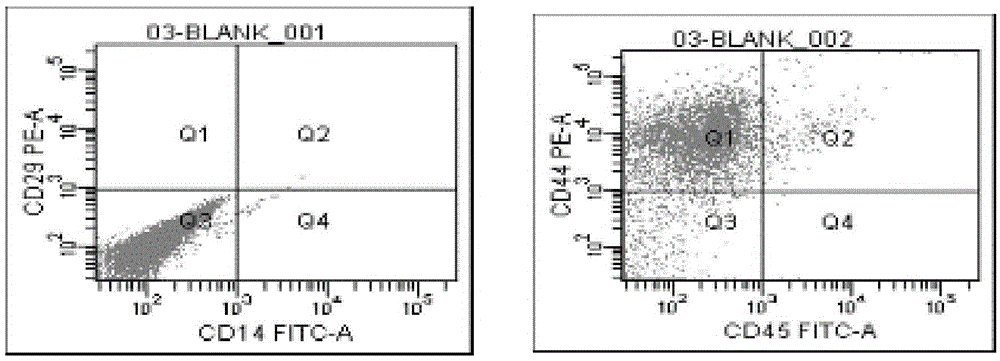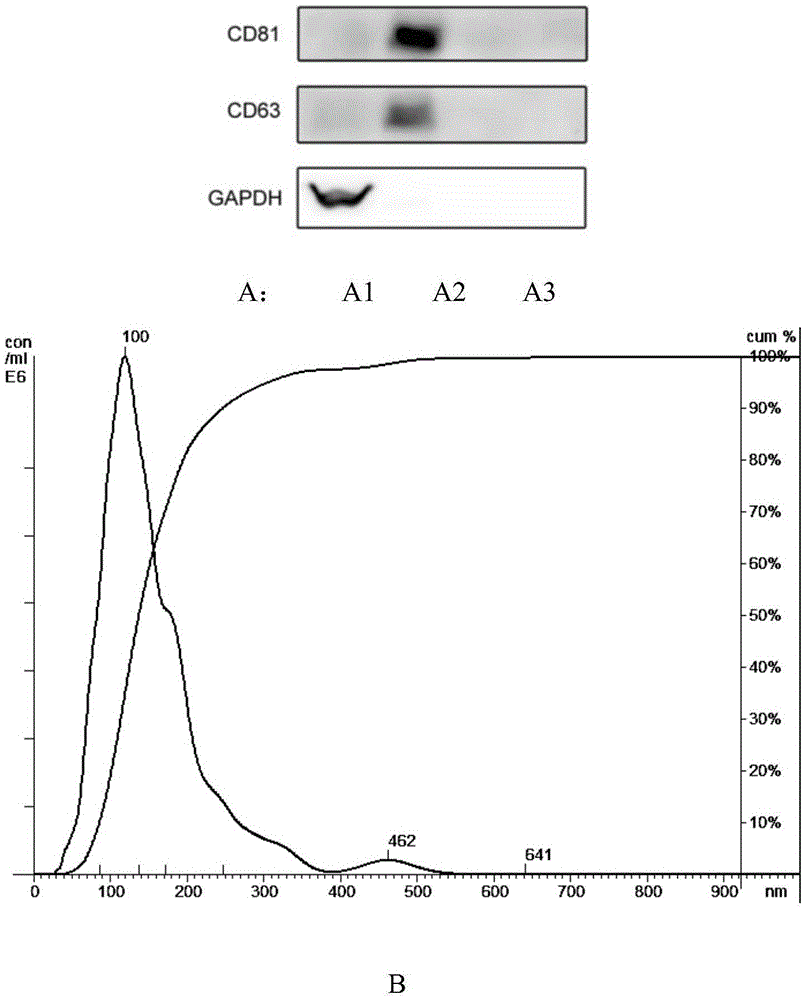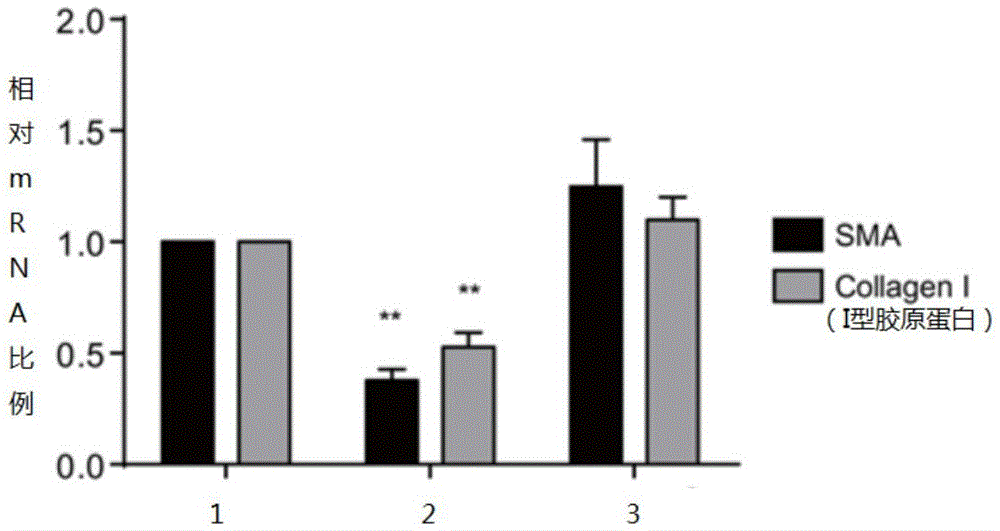Application of exosome derived from human mesenchymal stem cells to resistance to tissue fibrosis and scar forming
A technology of stem cells and exosomes, applied in drug research and development, can solve the problems of limited clinical application, difficult storage, safety problems, etc., and achieve the effect of convenient resource acquisition, easy absorption, and inhibition of tissue and organ fibrosis.
- Summary
- Abstract
- Description
- Claims
- Application Information
AI Technical Summary
Problems solved by technology
Method used
Image
Examples
Embodiment 1
[0029] Example 1: Preparation process of exosomes derived from mesenchymal stem cells
[0030] (1) Isolation, culture and expansion of mesenchymal stem cells:
[0031] 1) Take the fresh umbilical cord of a newborn, wash it repeatedly with phosphate buffer, soak it in L-DMEM containing 1% penicillin and streptomycin for about 5 minutes, and cut it into tissue pieces with a diameter of about 1.5mm; Bovine serum L-DMEM nutrient solution, 5% CO2, 37°C saturated humidity culture; after 7-10 days, mesenchymal stem cells can be seen climbing out of the tissue, after removing the tissue pieces, digest with 0.25% trypsin for subculture. Identification results such as figure 1 shown. It can be seen that umbilical cord mesenchymal stem cells highly express CD29, the positive rate is 99.7%; CD44, the positive rate is 94.4%, do not express CD14, the positive rate is 0.2%; do not express CD45, the positive rate is 3.1%.
[0032] 2) Take the bone marrow of a healthy person, expose the bon...
Embodiment 2
[0045] Example 2: Cytological study on the ability of exosomes secreted by umbilical cord mesenchymal stem cells to regulate the differentiation of fibroblasts into myofibroblasts
[0046] (1) Isolation, culture and expansion of fibroblasts: Take normal human skin tissue, wash it repeatedly with phosphate buffer saline, soak it in H-DMEM containing 1% penicillin and streptomycin for about 5 minutes, cut it into a diameter of about Tissue blocks of 1.5mm size were pasted in a culture dish; cultured in H-DMEM nutrient solution containing 10% fetal bovine serum, 5% CO2, and 37°C saturated humidity; after 7-10 days, fibroblasts and epidermal cells could be seen crawling out of the tissue, After removing the tissue pieces, digest with 0.25% trypsin for about 1 minute according to the digestion time required for fibroblasts, and subculture after removing epidermal cells.
[0047] (2) Establish a cell model of fibroblast differentiation into myofibroblasts: spread fibroblasts on a 6-we...
Embodiment 3
[0075] Example 3. Exosomes derived from mesenchymal stem cells alleviate liver fibrosis in rats
[0076] (1) Rat liver fibrosis model is established: CCl is made into 50% olive oil agent, and each rat in the treatment group is injected intraperitoneally by 1ml / kg body weight, three times in the first, twice a week after the second week, and simultaneously Feed 10% alcoholic beverages for six weeks.
[0077] (2) Exosome intervention therapy derived from mesenchymal stem cells:
[0078] Rats with hepatic fibrosis were randomly divided into 2 groups, 10 in each group.
[0079] Treatment method: exosome group: injecting exosomes with CCl 4 After the second week, start to treat once every three days, inject the present invention into the tail vein, and the dose is 150ug / kg for 3 weeks. Blank control group: the treatment time was the same as that of the exosome group, once every three days, the same volume of normal saline was injected into the tail vein for a total of 3 weeks. ...
PUM
| Property | Measurement | Unit |
|---|---|---|
| diameter | aaaaa | aaaaa |
Abstract
Description
Claims
Application Information
 Login to View More
Login to View More - R&D
- Intellectual Property
- Life Sciences
- Materials
- Tech Scout
- Unparalleled Data Quality
- Higher Quality Content
- 60% Fewer Hallucinations
Browse by: Latest US Patents, China's latest patents, Technical Efficacy Thesaurus, Application Domain, Technology Topic, Popular Technical Reports.
© 2025 PatSnap. All rights reserved.Legal|Privacy policy|Modern Slavery Act Transparency Statement|Sitemap|About US| Contact US: help@patsnap.com



